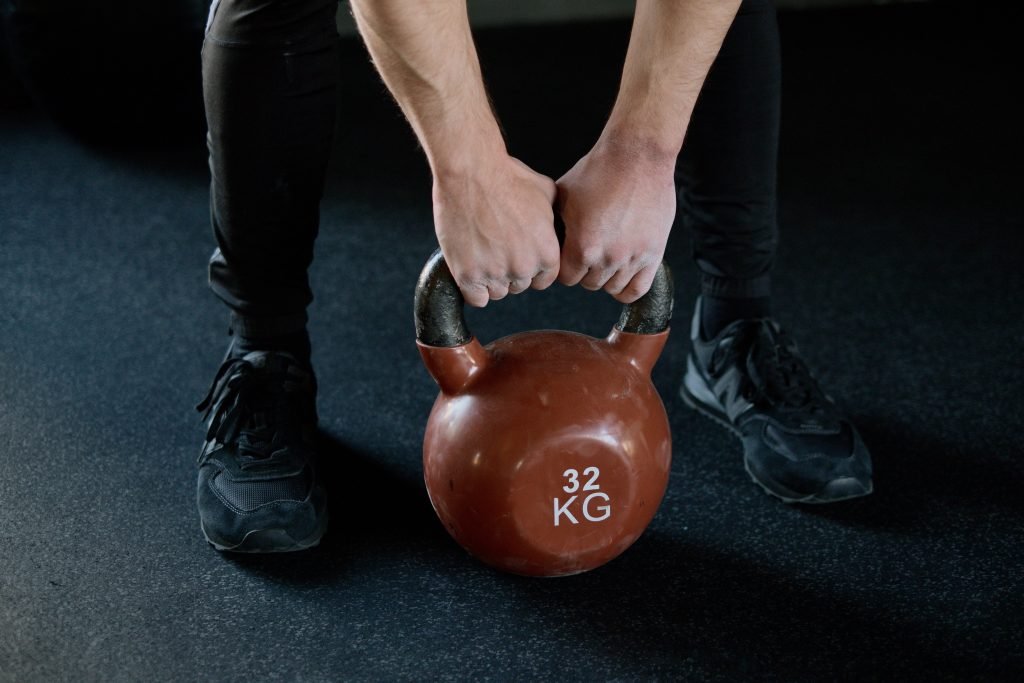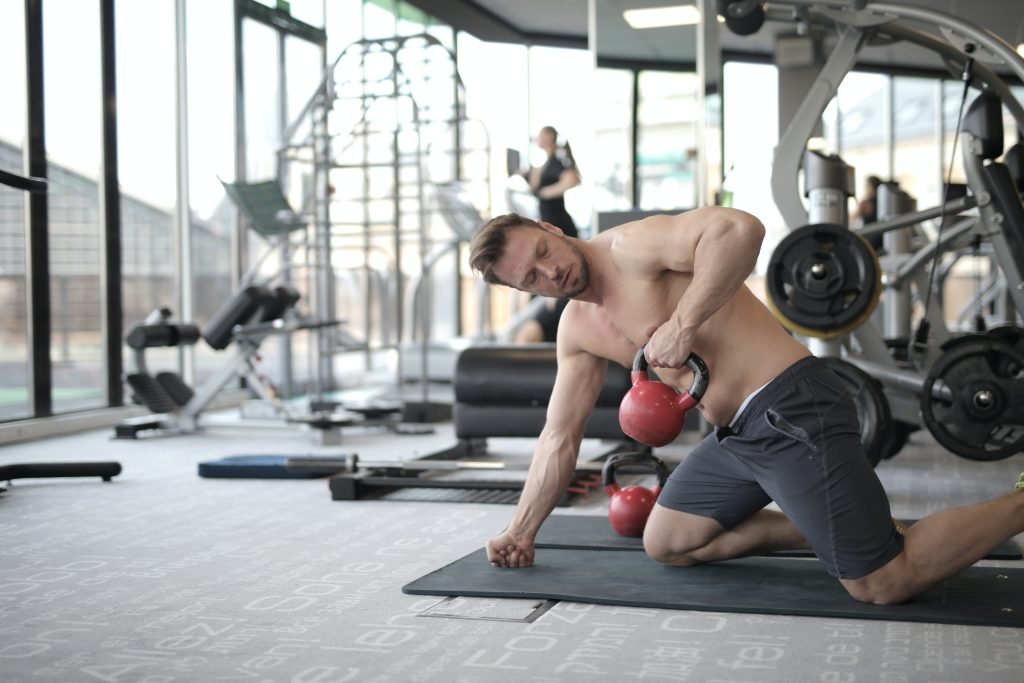Introduction
In recent years, the world of fitness has witnessed a remarkable resurgence of a timeless exercise tool—the kettlebells. This seemingly unassuming piece of equipment, resembling a cannonball with a handle, has been making waves in gyms, homes, and fitness studios across the globe. These workouts have gained immense popularity due to their unique ability to sculpt the body and boost overall fitness.
While kettlebells may appear small, they pack a powerful punch in terms of fitness benefits. They seamlessly combine elements of weightlifting and cardio, offering a comprehensive workout experience. In this article, we will dive deep into the world of kettlebell workouts, exploring their origins, mechanisms, and scientific backing and offering essential tips for beginners and advanced lifters. Whether you’re a fitness enthusiast or a newcomer to the world of kettlebells, this guide will help you harness the power of kettlebell workouts to achieve your fitness goals.
What Are Kettlebell Workouts, and How Do They Work?
Before we dive into the nitty-gritty of kettlebell workouts, it’s essential to understand what they are and how they differ from other exercise methods. These workouts are a form of strength and cardiovascular training that utilizes a uniquely shaped weight. These workouts are characterized by their dynamic and functional movements, making them distinct from traditional weightlifting exercises.
History and Origins
To truly appreciate the power of these workouts, it’s important to explore their history and origins. These distinctive exercise tools have a lineage that can be traced back to Russia in the 18th century. Kettlebells were initially used as counterweights for crops and were eventually adopted by strongmen and the military. Over time, they evolved into the versatile fitness tools we know today.
Kettlebells training gained popularity in the West in the early 2000s, with Russian kettlebell expert Pavel Tsatsouline playing a significant role in introducing the techniques to the fitness world. Today, these workouts have become an integral part of many fitness regimens, thanks to their efficacy in achieving strength, endurance, and overall physical fitness.
Key Exercises and Movements
Kettlebell workouts are renowned for their versatility. They offer a wide range of exercises and movements that engage multiple muscle groups simultaneously. These exercises form the backbone of any kettlebell workout routine and include:
Kettlebells Swings

Swing is perhaps the most iconic and foundational exercise in kettlebell training. This dynamic movement involves swinging it between your legs and then powerfully thrusting it forward, using your hips and glutes. It’s an excellent exercise for building explosive power and improving cardiovascular endurance.
Kettlebells Snatches

Snatch is a high-intensity exercise that involves lifting the kettlebell from the ground to overhead in one fluid motion. It’s an effective full-body exercise that combines strength and cardio.
Kettlebells Cleans

Cleansing involves lifting the kettlebell from the ground to your shoulder in a controlled manner. This exercise focuses on the core and upper-body muscles and is essential for developing overall strength.
Turkish Get-Ups

The Turkish get-up is a complex, full-body exercise that promotes strength, stability, and mobility. It requires a series of movements, including lying down, getting up and standing while holding the kettlebell above your head.
These are just a few examples of the many exercises that can be performed with kettlebells. Each exercise targets different muscle groups, making kettlebell workouts highly effective for total-body conditioning.
Read also:
Benefits of Kettlebells Workouts
The key to understanding the appeal of these workouts lies in exploring the unique benefits they offer. Here are some of the advantages you can expect from incorporating kettlebell training into your fitness routine:
Improved Muscle Strength
These workouts are highly effective for building muscle strength. They engage multiple muscle groups in each exercise, providing a comprehensive strength-training experience. The dynamic nature of these movements challenges your muscles in ways that traditional weightlifting exercises do not.
Enhanced Core Stability
A strong core is essential for overall fitness and injury prevention. Kettlebell exercises, particularly those that involve rotation and stabilization, such as the Turkish get-up, can significantly improve core stability.
Increased Endurance
These workouts are not just about strength; they also provide an excellent cardiovascular workout. Exercises like swings and snatches elevate your heart rate, helping improve endurance and overall aerobic capacity.
The Science Behind Kettlebells Workouts
In this section, we will delve into the scientific principles underpinning the power of kettlebell workouts.
Cardiovascular Benefits
One of the standout features of kettlebell workouts is their ability to elevate heart rates and enhance cardiovascular fitness. Unlike traditional weightlifting, which primarily focuses on muscle-building, these exercises combine strength and cardio. This combination is known to improve heart health, endurance, and overall aerobic capacity.
A study published in the Journal of Strength and Conditioning Research found that kettlebell training can provide a significant cardiovascular workout while also improving strength and power. The dynamic nature of kettlebell movements, such as swings and snatches, requires efficient energy utilization, making it an effective way to boost cardiovascular health.
Muscle Building and Toning
Building lean muscle is a goal for many fitness enthusiasts, and these workouts are well-suited to achieve this. The science behind muscle growth involves resistance training, and kettlebell exercises provide that resistance in a dynamic and engaging way.
These workouts engage both primary and stabilizing muscles in each exercise, promoting muscle development throughout the body. A study published in the Journal of Fitness Research showed that a 20-minute kettlebell workout can significantly increase muscle activation and strength, making it an efficient choice for muscle building.
Metabolism Boost
A boosted metabolism can be a game-changer in your fitness journey, and these workouts have been shown to enhance metabolism. The metabolic rate refers to the rate at which your body burns calories to maintain basic functions at rest. By engaging multiple muscle groups and promoting cardiovascular fitness, kettlebell workouts help increase your basal metabolic rate (BMR), leading to more efficient calorie burning even when you’re not working out.
This metabolic boost can be particularly beneficial for those looking to manage their weight and shed excess body fat. A study published in the Journal of Human Kinetics found that kettlebell workouts significantly increased participants’ resting metabolic rate, indicating a greater calorie burn throughout the day.
Tips for Getting Started with Kettlebells Workouts
If you’re new to kettlebell workouts, it’s essential to start with the right foundation to ensure safety and effectiveness. This section is dedicated to providing practical tips and advice for beginners.
Selecting the Right Kettlebells Weight
Choosing the appropriate weight is crucial for a safe and effective workout. Here are some guidelines to help you select the right weight:
Start Light: If you’re new to training, begin with a lighter kettlebell to learn proper form and technique. A weight between 8 and 12 kilograms (18 and 26 pounds) is a good starting point for many beginners.
Gradually Progress: As you become more comfortable with the exercises, you can gradually increase the weight. A general guideline is to aim for a kettlebell that allows you to perform 10-15 repetitions with good form.
Seek Professional Guidance: If you’re uncertain about the right weight for your fitness level, consider working with a certified instructor or a personal trainer. They can provide personalized recommendations.
Proper Form and Technique
Kettlebell exercises rely on correct form and technique for safety and effectiveness. Here are some key points to keep in mind:
Hinge at the Hips: Many movements, like the swing and the snatch, require a powerful hip hinge. Learn to hinge at the hips and engage your glutes and hamstrings to generate power.
Neutral Spine: Maintain a neutral spine throughout the exercises. Avoid rounding or arching your back, which can lead to injuries.
Brace the Core: Engage your core muscles to stabilize your spine and protect your lower back.
Learn the Basics: Master the foundational exercises, such as the swing and the Turkish get-up, before moving on to more advanced movements.
Structuring Your Workout
A well-structured kettlebell workout includes warm-ups, the main exercises, and cool-downs. Here’s a sample workout structure:
Warm-Up: Start with 5–10 minutes of light cardio, such as jogging in place or jumping jacks. Follow this with dynamic stretches to prepare your muscles for exercise.
Main Exercises: Perform the primary kettlebell exercises for 15–30 minutes, depending on your fitness level. Begin with 2-3 sets of each exercise and gradually increase the sets and repetitions as you progress.
Cool-Down: Finish your workout with static stretches to improve flexibility and reduce muscle soreness. Focus on the muscles worked during the workout.
Common Mistakes to Avoid
To make the most of your kettlebell workouts, it’s important to be aware of common mistakes and how to avoid them.
Overdoing it: Start with a manageable weight and gradually increase it. Overestimating your abilities can lead to injuries.
Neglecting Proper Warm-Up: Skipping the warm-up can increase the risk of muscle strains and injuries.
Poor Posture and Form: Maintain good posture and form throughout the exercises to prevent strain on your joints and muscles.
Ignoring Progress: Track your progress and gradually increase the intensity of your workouts to continue challenging your body.
Advanced Kettlebells Workouts for Experienced Lifters
For those who have already mastered the basics of kettlebell training and are seeking to take their fitness to the next level, this section explores advanced kettlebell workouts and techniques.
The Kettlebells swung.
The kettlebell swing is a foundational exercise for kettlebell enthusiasts, and mastering it is a significant milestone in your kettlebell journey. Here’s how to perform it:
- Setup: Stand with your feet shoulder-width apart and the kettlebell on the floor in front of you.
- Hinge at the Hips: Bend at your hips, keeping your back straight, and reach down to grasp the kettlebell handle with both hands.
- Swing Back: Swing the kettlebell back between your legs while keeping your back straight and maintaining a neutral spine.
- Thrust Forward: Use your hips and glutes to powerfully thrust the kettlebell forward, bringing it to shoulder height. Keep your arms straight.
- Swing Back and Repeat: Let the kettlebell swing back between your legs and repeat the movement.
The Turkish Get-Up
The Turkish get-up is a challenging full-body exercise that enhances strength, mobility, and stability. It involves a series of movements to transition from lying down to standing while holding the kettlebell above your head. Here’s a simplified breakdown of the exercise:
- Starting Position: Lie on your back with your right arm extended straight up, holding the kettlebell. Bend your right knee with your foot flat on the ground. Your left arm should be extended to the side.
- Roll Onto Your Side: Roll onto your left side while keeping the kettlebell extended upward.
- Move to a Kneeling Position: Push off your left hand to come up to a kneeling position.
- Stand Up: From the kneeling position, stand up while keeping the kettlebell overhead.
- Reverse the Movements: To return to the starting position, reverse the sequence of movements.
The Clean and Press
The clean and press is an advanced exercise that targets multiple muscle groups. It’s a compound movement that combines a clean (lifting the kettlebell to your shoulder) with a press (lifting it overhead). Here’s how to perform it:
- Setup: Begin with the kettlebell on the floor between your feet. Stand with your feet shoulder-width apart.
- Clean: Bend at your hips and knees to pick up the kettlebell. Bring it to your shoulder in one smooth motion, keeping your elbow tucked in.
- Press: Once the kettlebell is at your shoulder, press it overhead until your arm is fully extended.
- Return: Lower the kettlebell back to your shoulder and then back to the floor.
Conclusion
Kettlebell workouts have emerged as a fitness powerhouse, capable of sculpting your body and boosting overall fitness. Whether you’re a beginner embarking on your fitness journey or an experienced lifter looking to challenge yourself further, kettlebells offer a versatile and effective way to achieve your goals. Their unique blend of cardiovascular benefits, muscle-building potential, and metabolism-boosting properties make them a standout choice in the world of fitness.
As you explore the world of kettlebell workouts, remember the importance of proper form, gradual progression, and consistency in your training. With dedication and the guidance provided in this article, you can harness the power of kettlebells to transform your body and enhance your fitness levels. So, pick up a kettlebell and get ready to experience the incredible benefits that this unassuming piece of equipment has to offer on your fitness journey. Whether you’re swinging, snatching, or pressing, kettlebells are here to sculpt your body and elevate your fitness to new heights.
